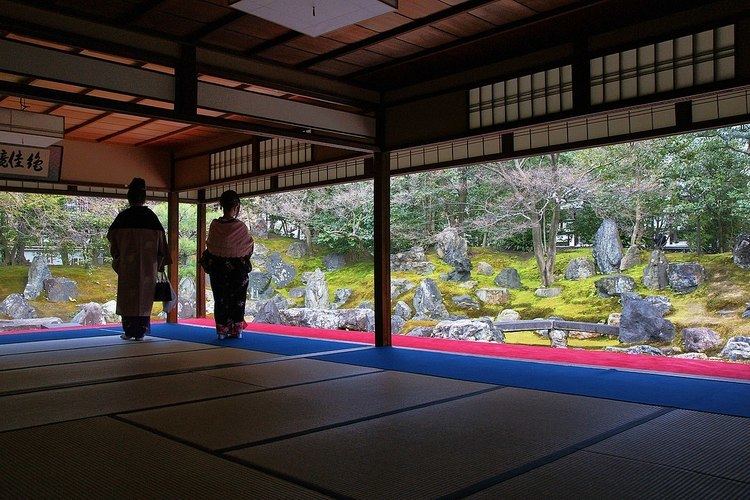 | ||
The Higashiyama Period (東山時代), also known as the period of "Higashiyama Culture" or Higashiyama Bunka (東山文化), is a segment of Japanese culture originated and promoted in the 15th century by Shogun Ashikaga Yoshimasa, after he retired to his villa in the eastern hills (Higashiyama) of Kyoto.
Contents
Outline
Based largely on the ideals and aesthetics of Zen Buddhism and the concept of wabi-sabi (beauty in simplicity), Higashiyama Bunka centered on the development of chadō (Japanese tea ceremony), ikebana (flower arranging), Noh drama, and sumi-e ink painting. Much of what is commonly seen today as traditional Japanese culture originated or developed in this period. Higashiyama Bunka is often contrasted with Kitayama Bunka (北山文化), the "Kitayama Culture" from earlier in the Muromachi period. In this comparison Kinkaku-ji, representative of Kitayama Culture is compared with Ginkaku-ji, representative of Higashiyama Culture.
Yoshimasa's retirement villa became known as the temple Ginkaku-ji (the Temple of the Silver Pavilion) after his death. It is situated in Kyoto's Sakyō-ku, and was the center of the Higashiyama cultural outgrowth in a number of ways. The Pavilion is revered for its simple beauty, the silver having never been added. The rock garden next to it is likewise one of the most famous in Japan, and praised for its Zen and wabi-sabi aesthetics. It is a quintessential example of the idea that only the trained expert should be able to recognize the subtle beauty within art and architecture; the beauty of the object should not be underscored and emphasized, but gently hidden. The retired shogun also invited many artists, poets, and court nobles to his villa, encouraging the development of their arts.
The Tōgudō building includes a shoin-style room called the Dōjinsai. It originally had a fireplace built into the floor, and due to this, the Dōjinsai is considered the earliest extant example of a room designed for use as a tea room.
There were many architectural innovations in this period, exhibited in the Ginkaku-ji in particular, which would later become core elements in the shoin style of 17th century architecture. One of these elements was the tokonoma, a small alcove in which scrolls are hung, and flowers or other small articles are placed to enhance the aesthetic feel of the room. The great ink-painter Sesshū Tōyō spent much time at the Ginkaku-ji, and this period also saw the birth of the Kano school of Japanese painting as well as an early version of chanoyu tea ceremony. Tea ceremony would be further formalized by Sen no Rikyū in the 16th century.
History
In the history of this period, a few specific dates are noteworthy:
